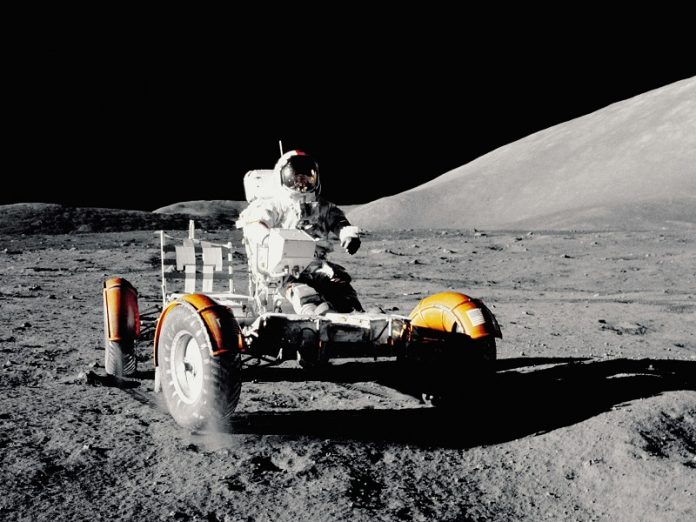
When NASA’s Mars rover Spirit got stuck in soft soil in 2009, engineers on Earth worked tirelessly to free it—trying different wheel movements and commands in the hope of getting the expensive vehicle back on track. Unfortunately, Spirit never moved again.
But what if we could prevent this kind of mission failure by testing better here on Earth?
That’s exactly what a team of engineers from the University of Wisconsin–Madison is helping to do. Using advanced computer simulations, they discovered a big flaw in the way space agencies test how rovers will move on other planets or the moon.
Their findings were published in the Journal of Field Robotics, and they could change how space exploration is planned in the future.
Here’s the issue: for decades, engineers tested moon rovers by building lighter versions—about one-sixth the mass of the real vehicle—to match the moon’s lower gravity.
These test rovers would be driven across Earth’s deserts to see how well they handled sandy terrain. The idea was that this would mimic what a rover would face on the moon.
But the Wisconsin team, led by mechanical engineering professor Dan Negrut, found a hidden flaw in this logic. The problem wasn’t with the rover itself—it was with the sand.
Earth’s gravity is six times stronger than the moon’s. So even though the rover’s weight was reduced for testing, the sand still behaved like it does under strong Earth gravity.
That made it firmer and more supportive, giving the rovers more traction than they would actually have on the moon’s “fluffy” and unstable surface.
That means rover tests on Earth have been overly optimistic, and real lunar terrain could be much trickier to navigate.
Negrut’s team made this discovery while working on a NASA-funded project to simulate the VIPER rover, a vehicle designed for a future moon mission.
To do this, they used a powerful open-source simulation tool called Project Chrono, which was developed at UW–Madison with help from Italian collaborators.
Chrono lets researchers model complex machines—like full-size rovers driving across soft, uneven surfaces—with high accuracy.
As they ran simulations of the VIPER rover on moon-like terrain, they noticed that the results didn’t match what Earth-based tests had predicted. That’s when they realized the tests hadn’t accounted for the way gravity affects not just the rover but also the soil.
Chrono has already proven valuable far beyond space exploration. It’s been used by hundreds of groups worldwide, from companies making precision watches to the U.S. Army testing off-road vehicles. Negrut is proud of the impact this free, university-developed software is making.
“It’s rare for a university lab to create something this advanced,” Negrut says. “There are things we can simulate that even big tech companies can’t.”
Because Chrono is open source, anyone can use it—but that also means the team must keep pushing forward with new ideas and improvements.
Thanks to support from NASA, the National Science Foundation, and the Army Research Office, they plan to keep innovating and helping solve real-world problems both on Earth and far beyond.
Source: University of Wisconsin-Madison.



